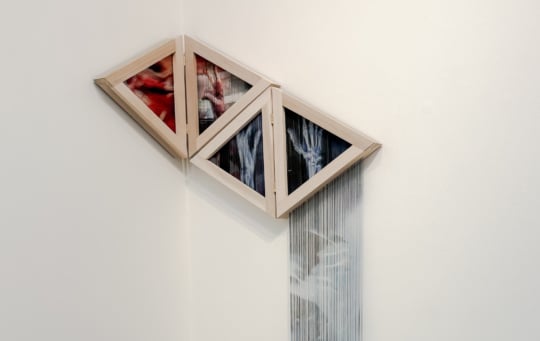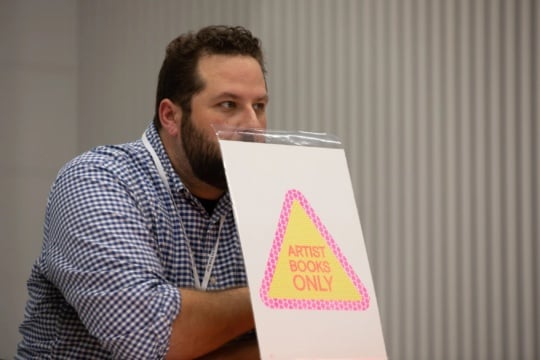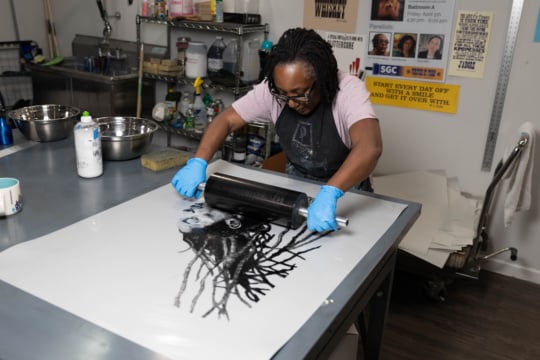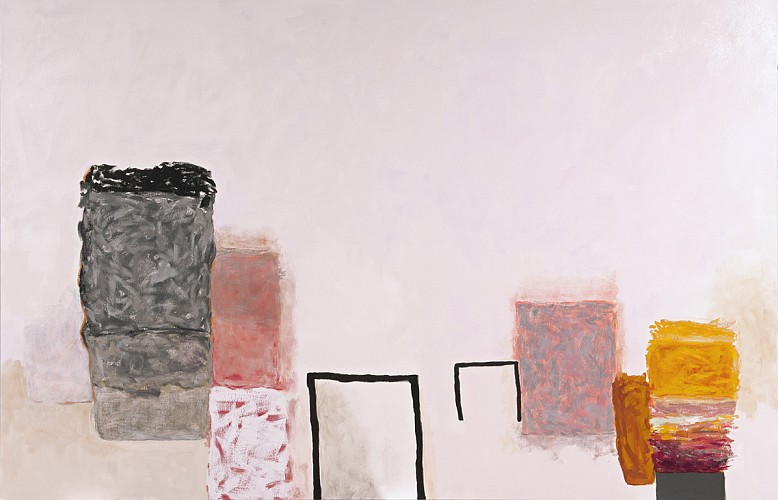
72 by 111 inches.
If you like painting, Atlanta artist Rocio Rodriguez’s wonderful show (through October 17) in New York’s Chelsea is for you. If you don’t, it might change your mind. This handful plus of lushly colored canvases plus two works on paper (all 2015), bear titles like Wet Cluster, Reds Rising, Canyon Grey, and Bits and Pieces. They are straightforward, stretched rectangles that still smell of paint and vary in scale from the moderate to one impressive 10-footer called Neither here nor there.
Rodriguez’s paintings are about painting, indicated by the titles above, with perhaps the exception of Neither here nor there, which might refer to painted, illusionistic space, metaphoric non-locations, or psychological or philosophical states of being, echoing Danish philosopher Søren Kierkegaard’s premise of “either/or.” Like the other works, it offers two systems of denoting space and place; one is coloristic, ambiguous, the other is linear, harder edged, and provisionally clearer. Consisting of stacked sections to form blocks, each could be a mini-painting in its own right, their surfaces animated by a wild array of marks. Her palette is equally compelling as the glow of rose or gold-orange sweetens the grays, blacks, and whites. They are set against a rich ground of neutral shades that are subtly warmed and emit a low pervasive heat—arranged along the recessionals of an invisible one-point perspective diagram.
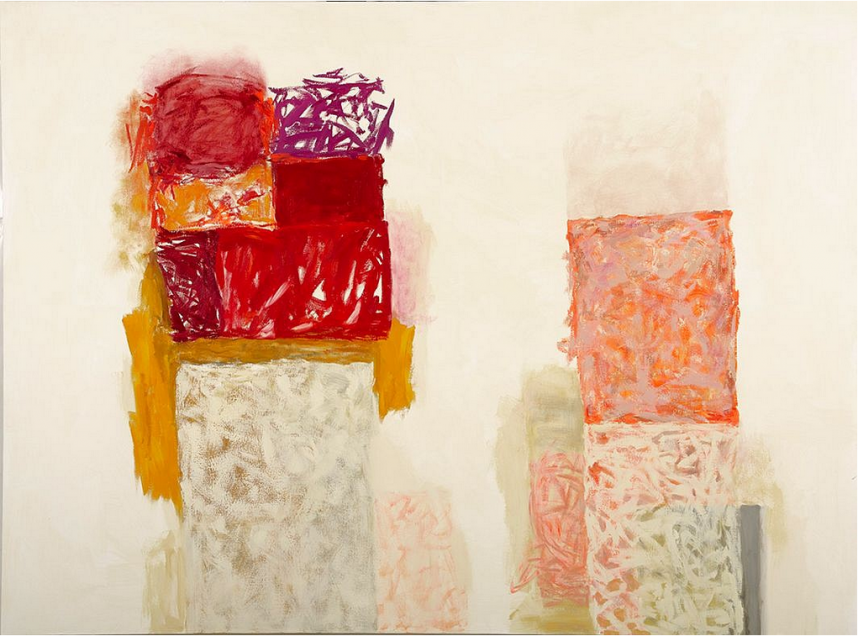
As a series, they are engrossing, deeply thoughtful abstractions. They investigate the medium’s processes and endless possibilities as a kind of narrative, inspired by the light, color and the way forms appear in relationship to the vast spaces around Marfa, where Rodriguez was in residence recently. Legendary predecessors can be glimpsed as traces or as fellow travelers such as Giorgio Morandi, Hans Hofmann, Mark Rothko, early Ad Reinhardt, early and late Philip Guston to contemporary colorists such as Stanley Whitney.
Most are stacked sections that form irregular columns of sorts—the artist likens them to totems—or like Morandi’s bottles. They overlap or are separated by various, indeterminate distances. Some sections zig and zag, in and out, some are top heavy, some float, some seem on the verge of dissolving, the gradations from light to dark never a steady or predictable progression, the balance precarious, creating an exciting visual tension, as Rodriguez tries out countless combinations. Wet Cluster shows overlaid, complex brushwork that is scumbled, scratched, squiggled, smeared, melting into each other, the brilliance of orange-gold, say, forced back by small tautly outlined rectangles of grey and black. But the brightness seeps through and around them, in a beautiful orchestration. Often, the geometric shapes are softened, the sensation more expressive, such as in Fevered Nights and Days Debris, among others.
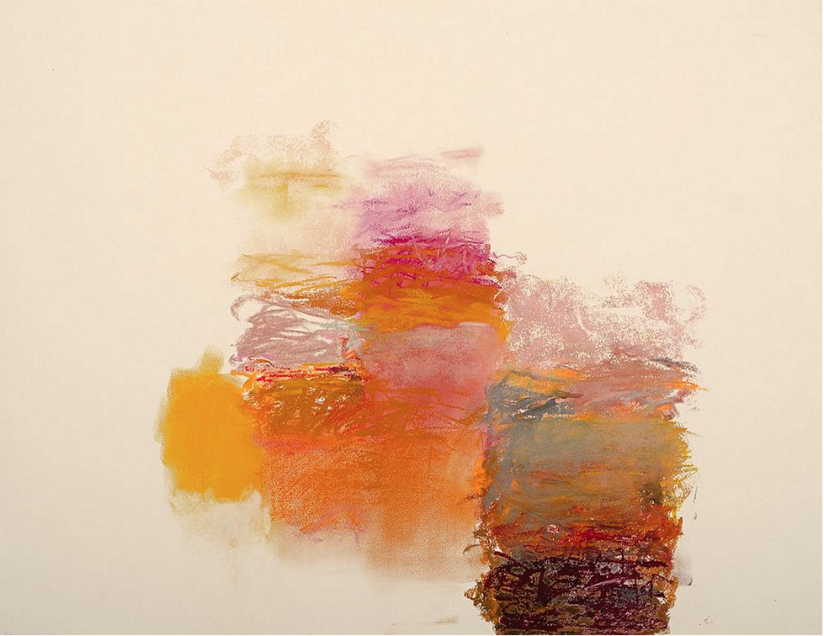
on paper, 18 by 24 inches.
The paintings are diaphanous in some areas, thicker in pigment in others but it is their lightness of being, their magical sense of imminent change that is transfixing, even poignant. The sheen that radiates from them seems to emanate from within, like a blessing. Their real draw, however, is simple. They are gorgeous to look at and that should be reason enough to keep viewers hanging around.
Lilly Wei is a New York-based critic and curator whose writing has appeared in such publications as Art in America, Art & Auction, and Artnews.

